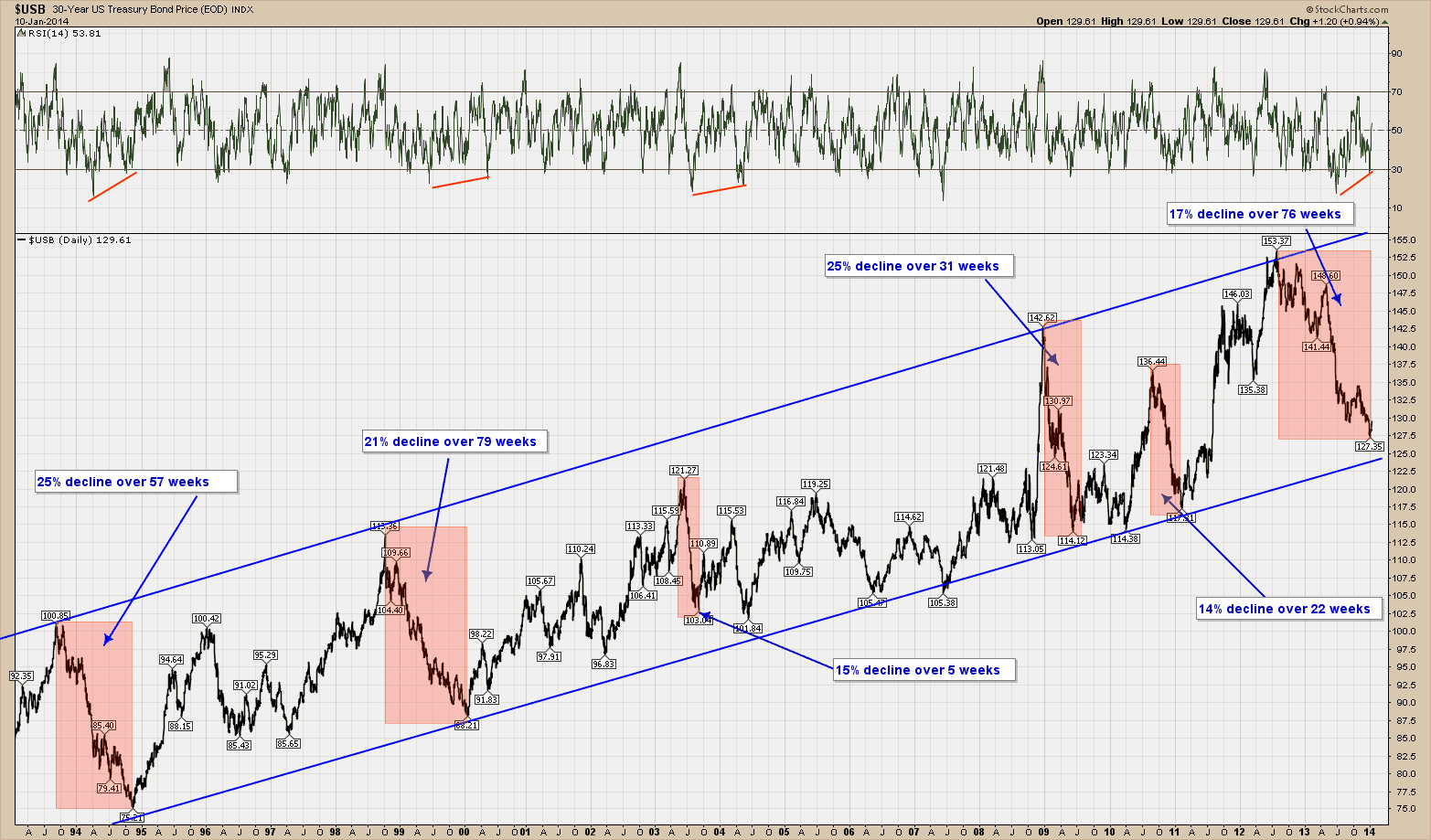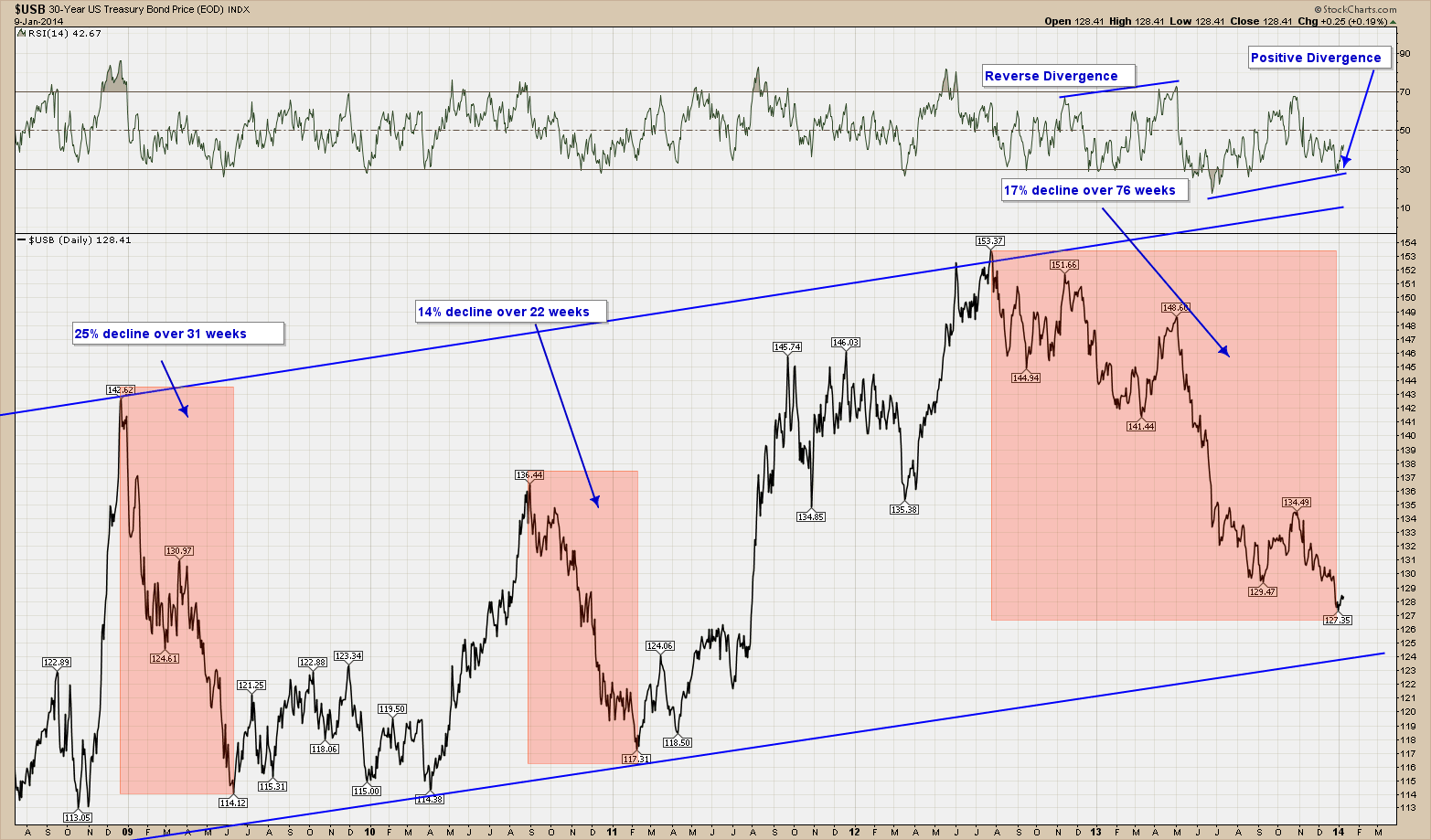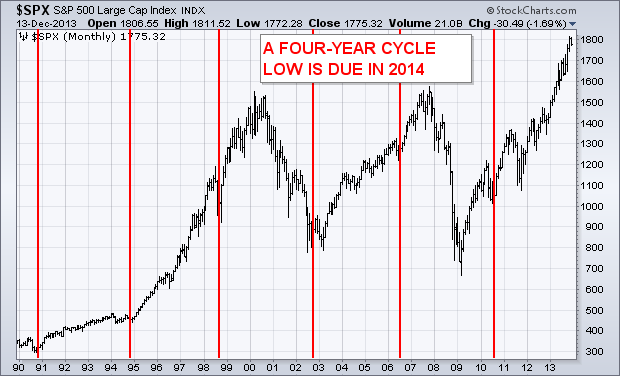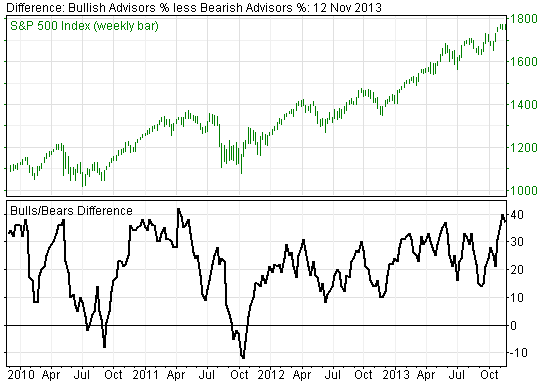Obviously this post is meant tongue-in-cheek but there actually are those that watch (and invest accordingly) these things … The Super Bowl Indicator holds that any NFC team winning the Super Bowl is bullish for stocks. It’s worked 80% of the time since the Super Bowl began in 1967. But if you take a close look at the S.B.I.’s performance, you’ll see the stock market LOVES the 49ers. In fact, win or lose, San Francisco has been in the Super Bowl in four of the five best years for the stock market since the big game between the NFC and AFC champs began in 1967. The Niners’ Super Bowl wins in 1985, 1989 and 1995 were followed by annual gains of 27.7%, 27.0% and 33.5%, respectively, for the Dow industrials. From 1967 to last year, only the Pittsburgh Steelers’ victory in 1975 delivered a bigger advance.
Even in 2013, when San Francisco lost to the Baltimore Ravens, the market boomed.
So S.B.I. believers don’t want just any old NFC team to triumph over the AFC champion in the Super Bowl. Under this thinking, it’s best for your portfolio to have the 49ers beat the Seattle Seahawks in Sunday’s NFC championship — and then win the big game itself on Feb. 2. Of course, the Super Bowl Indicator is a classic example of confusing correlation with cause and effect. MarketWatch’s Mark Hulbert took the whole faulty concept to the woodshed in a column last year. As he blasted “spurious correlations,” Hulbert pointed out that Bangladeshi butter production is an even better “indicator” for stocks. Perhaps the S.B.I. should be renamed the B.S.I.
Of the nine years when the S.B.I. has failed, four involved Super Bowl appearances by the Denver Broncos — who play the New England Patriots on Sunday in the AFC Championship. So you may want to be wary of the Broncos — and also the Patriots. The best performance in years when the Pats won it all was a 3.1% gain in 2004. The worst was a 16.8% drop in 2002. And the Patriots’ loss in 2008 to the New York Giants was followed by Wall Street’s worst year since the Super Bowl began, a 33.8% slide in the Dow.
Seattle’s only Super Bowl appearance in 2006 was a loss to the Pittsburgh Steelers. The Dow surged that year. (Although the Seahawks are in the NFC, the Steelers have their roots in the old NFL, and for the purposes of the indicator are deemed to be an NFC team, meaning the indicator is deemed to have held that year.)
Overall, the prediction business is tough. Just ask all those Wall Street strategists who bet that the falling hemlines in last year’s spring collection indicated a bad year for stocks.






